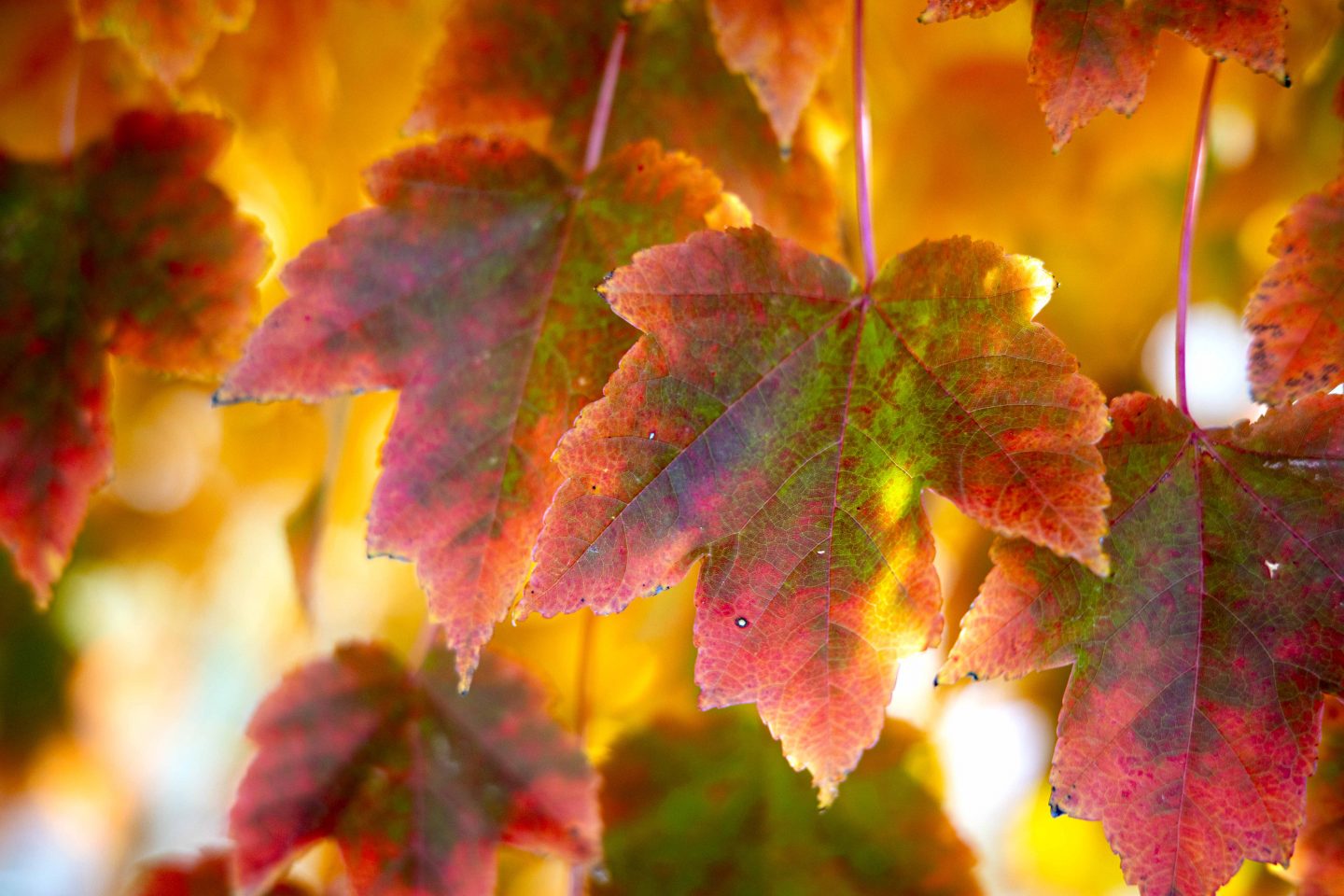
By Jennifer Ruyle, Outdoor Education Specialist, NGPC
It’s that time of year when trees start to dress for winter. Maybe not in the same sense that we do — they can’t check the weather forecast and put on layers before a chilly morning. But they prepare in other ways.
Inside their cells, tree leaves contain a pigment called chlorophyll that absorbs sunlight and reflects green light waves during photosynthesis. This causes leaves to look green. The UV rays in sunlight break down chlorophyll all the time, so new chlorophyll must constantly be made.
As days shorten toward autumn, deciduous trees start to store nitrogen and phosphorus in their woody parts rather than continuing to supply leaves with nutrients, protecting themselves and saving energy.
So, with fewer nutrients and less sunlight, leaves slow down their chlorophyll production, and the green color fades. This enables other pigments in the leaf to show through and reflect different colors.
The red maple leaf is a great example of this phenomenon. You can practically see the tree withdrawing nutrients from the leaf. Areas closest to the leaf stem and veins have the most chlorophyll production happening so they still appear green. Nutrients from the perimeter of the leaf have already been pulled back into the branch to be used for leaf production next year.
But why are there so many fall colors? In addition to chlorophyll, other pigments are present in leaves. Different types of trees have genetic differences that cause certain pigments to dominate their leaves in the fall and turn colors characteristic to their species.
Bowhunters that favor hunting in river bottoms in early fall will notice the golden yellow of cottonwoods. Hikers and birdwatchers in oak hickory woodlands will enjoy red, brown and golden bronze colors.
Of course, it doesn’t happen all at once. Every tree is an individual in a unique place in the forest. And just like people, they get ready for winter in their own time.
